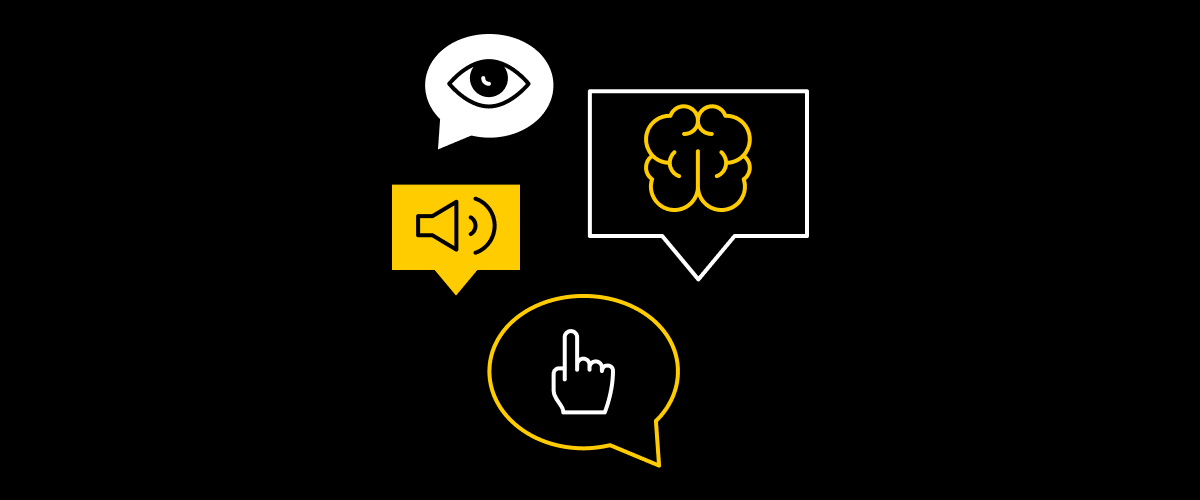At Directly, we care deeply about providing personable and empathetic messaging experiences for customers. When working with large enterprise companies like Microsoft and Airbnb, we understand that we’re helping millions of users worldwide. Our solutions were built to help the majority of users, but what about users who have different needs?
The internet can be a hostile place for the 15% of the world’s population who experience some form of disability. That’s roughly 1 billion people, of which 20 percent “experience significant disabilities,” according to World Bank data. In addition, according to a study by Pew Research, only 40% of disabled Americans feel comfortable using the internet (compared to 80% of able-bodied users).
How high are the stakes for accessibility, and why should we care?
Based on U.S. Federal Government data from the National Eye Institute, 1 in 12 men and 1 in 200 women experience some form of color blindness. That means you’ve almost definitely interacted with someone in your life who might mix up their greens with their reds and yellows. The most prevalent condition of colorblindness is called protanopia, an insensitivity to red light.
In everyday life, there can be severe consequences for excluding this user base when designing solutions. Think of a traffic light while driving. The only form of communicating when to stop, proceed with caution, and go is symbolized with the colors red, yellow, and green. For the 8% of men and .05% of women who are affected by protanopia color blindness, distinguishing between the three colors can be a risky challenge and an error can result in dangerous repercussions.
An older version of our customer support experience relied on a rating system of sad faces to happy faces to gauge satisfaction. We used to rely heavily on color as the primary form to communicate a scale of 1 to 5, 1 being most dissatisfied and 5 being most satisfied:
(Image description: two screenshots of a previous version of our customer support messenger, with a rating system based on red, yellow, and green colors)
We heard from our users about the inaccessible nature of this feature:
(Image description: Slack message from an end user stating, “Your button at the bottom where I rate the agent uses red/yellow/green… keep in mind that over 10% of males can’t see all 3 colors distinctly (including me)… can you please change the symbols & colors to be agnostic of tint (and culture)? Thanks!”)
As a result, we quickly adapted our product to address the issue.
Simply put, building accessible products just makes business sense. The more users that can use your products, the more profitable the business can be. According to the World Wide Web Consortium, the global market of people with disabilities is over 1 billion people with a spending power of more than $6 trillion. The exclusion of an entire user base can lead to major financial losses and missed opportunities to expand and scale.
And if you need more motivation to develop accessible products, consider the legal ramifications. The U.S. Department of Justice reports that in 2017, there were 814 lawsuits filed in federal and state courts alleging that public accommodations’ websites were not accessible to individuals with disabilities. A famous case study is the $6 billion federal lawsuit against Target on grounds that its website was inaccessible to the blind (see: National Federation of the Blind v. Target Corp).
In summary: building accessible products for diverse users drives innovation, expands market reach, and minimizes legal risk.
To provide the best possible experience for users, the design team at Directly revisited our brand colors and introduced accent colors that meet web content accessibility guidelines (we’re now WCAG AA compliant). Moving forward, we can continue to serve our diverse user base while ensuring a memorable customer support experience.
We are proud to be a part of an inclusive movement to bring innovative technologies to every possible user. As we all know, poor customer support is incredibly frustrating, and access to information and support should be a right, not a privilege. Our efforts towards accessibility is part of our long-term vision to enable everyone to get the help they need across all digital platforms.
Check out this starting point for resources:
Tools to check color contrast of text:
Checklists:
Broad checklist to ensure WCAG compliance
VoxMedia checklist for designers, engineers, QA, product managers and editors
Cool links and projects:
The A11Y Project, an open-source community effort to spread web accessibility.
